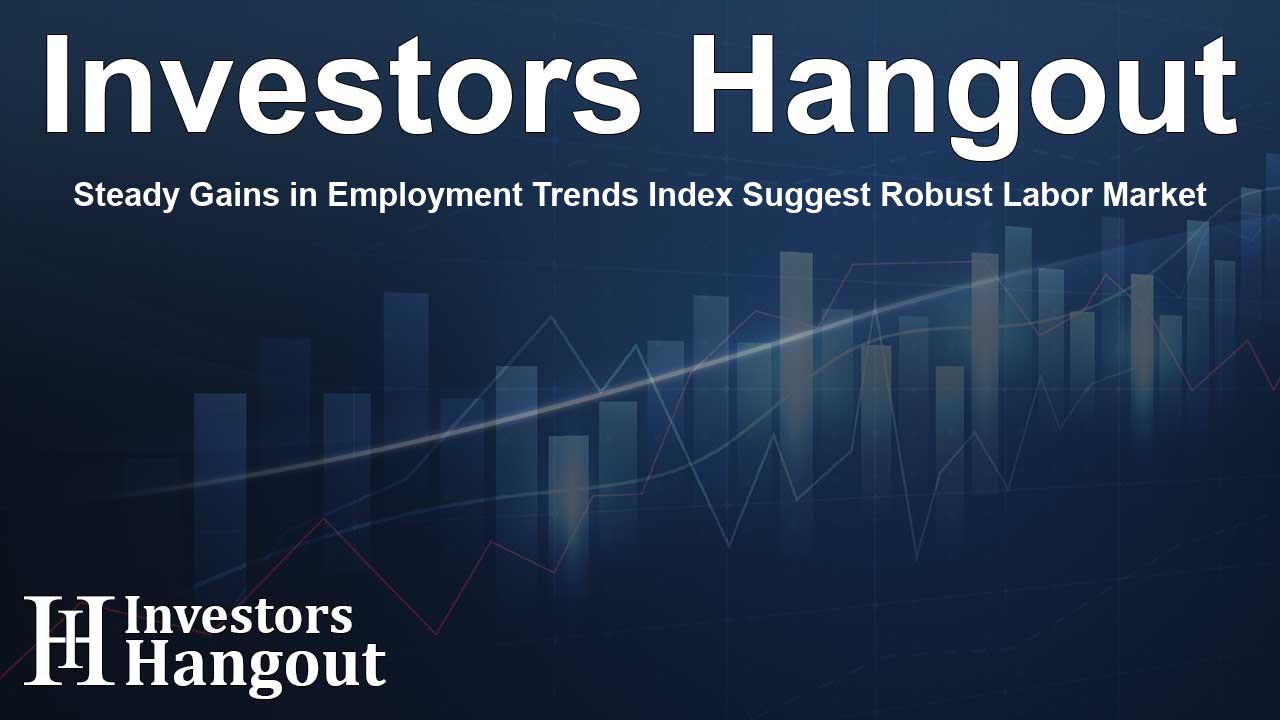Steady Gains in Employment Trends Index Suggest Robust Labor Market

The Employment Trends Index Shows Encouraging Signs
The latest data from the Employment Trends Index (ETI) indicates a positive shift in employment trends, rising to 109.04 in August. This increase comes as a welcome change amid a slight downtrend observed earlier, following a revised figure of 108.71 from July. The ETI serves as a predictive composite index for market payrolls; thus, an increase typically signals potential job growth on the horizon.
Insight from Economists
Mitchell Barnes, an economist associated with the Conference Board, shares that August's rise in the ETI marks only the second monthly gain for this year. This information is particularly significant as it arrives amidst a backdrop of tempered labor market data. Barnes noted that the ETI's uptick suggests that the slowdown in the labor market remains manageable ahead of the Federal Reserve’s upcoming meeting. Expectations of beginning a new interest rate cutting cycle could also come into play here.
Positive Trends Amidst Challenges
Interestingly, the growth in the ETI corresponds with favorable outcomes from the recent Employment Situation Report for August. This report indicated a sustained increase in payrolls and a decrease in unemployment rates. Additionally, there have yet to be signs of drastic layoffs, as seen in the slight drop in initial claims for unemployment insurance, which is a key component of the ETI. Employment levels in temporary help services have stabilized, and spending metrics among households remain robust.
Shifts in Job Market Dynamics
Despite the optimistic outlook presented by the recent ETI numbers, a nuanced understanding of the employment landscape reveals rising challenges for job seekers already in the market. Remarkably, the percentage of survey respondents from the Consumer Confidence Survey reporting difficulty in securing jobs has increased to 16.4%, which is a notable rise from previous months. This statistic underscores the evolving dynamics of job availability and the challenges some may face in the current economic climate.
Long-term Trends and Considerations
The consistent decline of the ETI since its peak in 2022 mirrors existing reports suggesting that many firms are now predominantly hiring for replacement roles rather than pursuing expansion. Interestingly, labor shortages continue to resurface, partly attributed to demographic changes and talent gaps affecting long-term hiring strategies.
Components Contributing to the ETI's Growth
The uptick in the Employment Trends Index in August was fueled by strength in four of its eight foundational components. These components include Real Manufacturing and Trade Sales, Job Openings, Initial Claims for Unemployment Insurance, and Industrial Production. The ETI is crafted by aggregating core indicators to furnish clearer insights into labor trends.
Understanding the Eight Indicators
The Employment Trends Index is meticulously compiled from eight leading employment indicators, each selected for its reliability in forecasting economic and employment trends. Notably, the metrics used encompass a wide spectrum of labor market indicators, which provide a more refined perspective on industry health. The indicators are as follows:
- Percentage of Respondents Who Say They Find "Jobs Hard to Get"
- Initial Claims for Unemployment Insurance
- Percentage of Firms with Positions Not Able to Fill Right Now
- Number of Employees Hired by the Temporary-Help Industry
- Ratio of Involuntarily Part-time to All Part-time Workers
- Job Openings
- Industrial Production
- Real Manufacturing and Trade Sales
Consistent Evaluations Ahead
The Conference Board regularly updates the Employment Trends Index on a monthly basis, one week after the Bureau of Labor Statistics releases its Employment Situation report. These updates offer valuable insights into the employment landscape, enabling stakeholders to respond to changes effectively.
Frequently Asked Questions
What does the rise in the Employment Trends Index indicate?
The rise suggests potential growth in employment, as the ETI is a leading indicator for payroll employment trends.
How often is the Employment Trends Index updated?
The Employment Trends Index is updated monthly, following the Bureau of Labor Statistics’ Employment Situation report.
What components influence the Employment Trends Index?
It is influenced by various metrics, including job openings, unemployment claims, and manufacturing sales, among others.
Why is the rise in August significant?
It marks the second monthly gain of 2024 and indicates a relative stability in hiring conditions amidst overall trends.
What challenges do job seekers face currently?
Job seekers are facing increased competition and difficulty due to emerging trends of job postings primarily focused on replacements rather than new roles.
About Investors Hangout
Investors Hangout is a leading online stock forum for financial discussion and learning, offering a wide range of free tools and resources. It draws in traders of all levels, who exchange market knowledge, investigate trading tactics, and keep an eye on industry developments in real time. Featuring financial articles, stock message boards, quotes, charts, company profiles, and live news updates. Through cooperative learning and a wealth of informational resources, it helps users from novices creating their first portfolios to experts honing their techniques. Join Investors Hangout today: https://investorshangout.com/
Disclaimer: The content of this article is solely for general informational purposes only; it does not represent legal, financial, or investment advice. Investors Hangout does not offer financial advice; the author is not a licensed financial advisor. Consult a qualified advisor before making any financial or investment decisions based on this article. The author's interpretation of publicly available data shapes the opinions presented here; as a result, they should not be taken as advice to purchase, sell, or hold any securities mentioned or any other investments. The author does not guarantee the accuracy, completeness, or timeliness of any material, providing it "as is." Information and market conditions may change; past performance is not indicative of future outcomes. If any of the material offered here is inaccurate, please contact us for corrections.